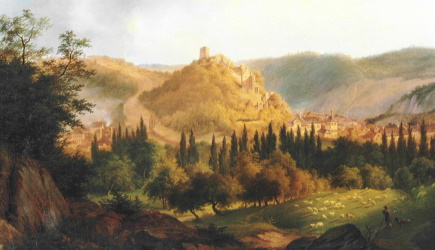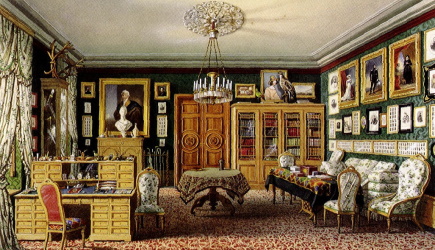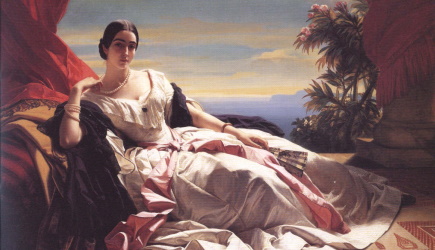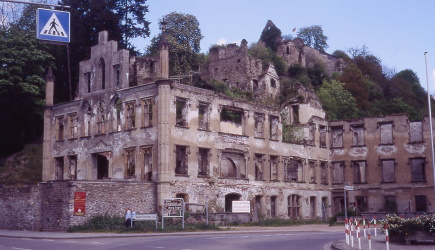History
The former mansion of the Herren von Reiffenberg dates back to the middle ages. In 1757 the Counts von Boos-Waldeck had rebuilt the house in a baroque stile. In 1848 Prince Ludwig Adolph Friedrich von Sayn-Wittgenstein-Berleburg, since 1861 Prince zu Sayn-Wittgenstein-Sayn, purchased the manor.

In the same year the Prince and his wife Leonilla received the adjacent castle hill and the ruins of the ancestral castle as a gift from the Prussian King Friedrich Wilhelm IV. The Prince had the mansion turned into a neo-gothic palace by François Joseph Girard (1806-1872), who later was to become the main architect at the Louvre in Paris. The vineyards and fields around the palace were sculptured into an English landscape-garden and the castle ruins were made accessible through romantic pergolas.


Near the end of World War II the palace was almost completely destroyed, when retreating German troops tried to blow up a small bridge in front of the building with a stray airplane bomb. The chapel, erected in 1860 by Architect Nebel of Koblenz, and the crypt below remained nearly undestroyed.

Prince Alexander had the tower, first mentioned in 1467, restored in a baroque style in 1968. The reconstruction of the other ruins was begun in the mid-80s, after the ruins of the palace had been declared a monument of national cultural dimensions. An extensive restoration program starting in 1995 was widely supported by the state of Rheinland-Pfalz. Since the completion of the construction works in summer 2000 the exterior of the palace resembles the original, neo-gothic appearance. Also, the chapel, the main staircase and several salons and state rooms were restored in a historic style, while the East wing since 2020 houses the New Museum Sayn Palace.



